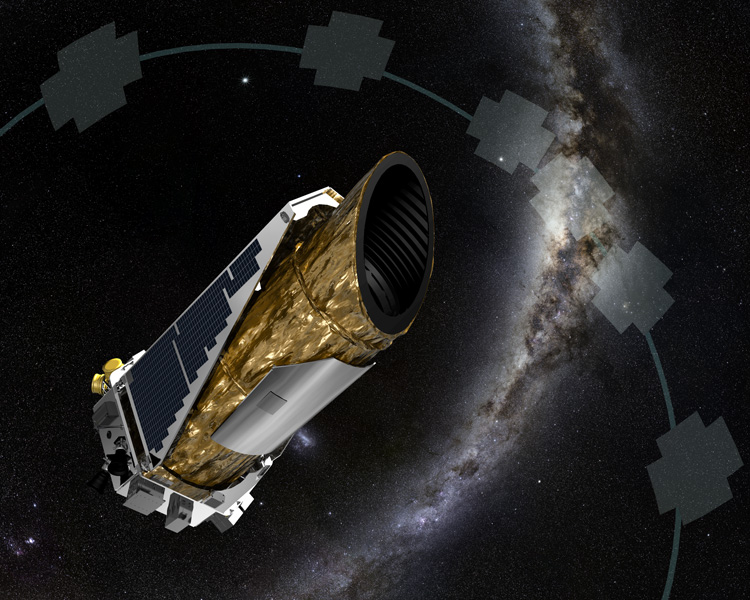
NASA’s Kepler planet-searching spacecraft is stable and out of emergency mode, officials said Monday, and the observatory is downlinking data to help engineers determine what caused it to suspend science operations last week.
“On Sunday morning, the spacecraft reached a stable state with the communication antenna pointed toward Earth, enabling telemetry and historical event data to be downloaded to the ground,” Charlie Sobeck, Kepler’s mission manager at NASA’s Ames Research Center, wrote in an update.
The spacecraft is operating in its most fuel-efficient mode, Sobeck added. Kepler burned its finite fuel supply at a faster rate than normal when the craft defaulted to emergency mode last week.
The planet-hunting telescope has not resumed science observations.
“Once data is on the ground, the team will thoroughly assess all on board systems to ensure the spacecraft is healthy enough to return to science mode and begin the K2 mission’s microlensing observing campaign, called Campaign 9,” Sobeck wrote. “This checkout is anticipated to continue through the week.”
Launched in March 2009, Kepler is now in an extended mission dubbed K2. The observatory completed its main mission in 2013.
During the extended observation campaign, Kepler points its telescope and sharp-eyed 95-megapixel camera toward a different part of the sky every few months. The observatory finished its last observations March 23 and was about to aim its imager toward the center of the Milky Way galaxy when it went into emergency mode last week.
Sobeck said the spacecraft entered emergency mode about 14 hours before it was supposed to flip around for the next science campaign, which is focused on searching for rogue planets — dark worlds careening through the galaxy without orbiting a star.
Ground telescopes are part of the rogue planet survey, and Earth-based astronomers have started their observations. Kepler has until July 1 to join the hunt, when the center of the galaxy moves out of the telescope’s field-of-view, Sobeck said.
Engineers have ruled out Kepler’s troublesome reaction wheels as the cause of last week’s glitch. The spacecraft is operating on two of its four reaction wheels, devices which allow the telescope to precisely point toward astronomical targets.
Managers changed Kepler’s observation scheme after the second reaction wheel failure in 2013. Officials previously said another lost reaction wheel would likely mean the end of Kepler’s science mission due to degraded pointing capability.
The spacecraft’s stability is critical for its camera to resolve the tiny dips in light that could indicate the presence of a planet around another star.
“An investigation into what caused the event will be pursued in parallel, with a priority on returning the spacecraft to science operations,” Sobeck wrote.
Mission controllers at the University of Colorado’s Laboratory for Atmospheric and Space Physics requested priority time on NASA’s Deep Space Network, a global array of communications antennas, to restore Kepler to normal operations.
Kepler is currently about 75 million miles from Earth in an orbit around the sun.
“It was the quick response and determination of the engineers throughout the weekend that led to the recovery,” Sobeck wrote.
Email the author.
Follow Stephen Clark on Twitter: @StephenClark1.



